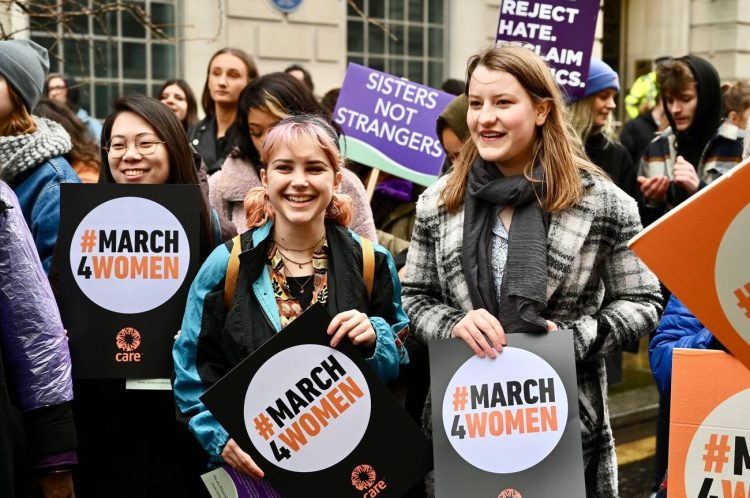Women’s Equality Day is a day of remembrance that encourages the public to reflect on the ongoing gender gap at work. It is a time to reminisce about how far women have come in terms of rights and opportunities, but also about how much remains for them to achieve. Women have made progress over the past few decades. However, many of them still face inequality, especially in countries like the UK. Northern Ireland, however, has been luckier than the rest of Britain. However, there is still a lot of work to do in that part of the world. Governments and employers need to improve the job market and create equal opportunities for women. The article discusses the gender gap in the workplace and the need for real support for women.
The Historical Challenge of Gender Inequality in Workplaces
Gender inequality has been a persistent issue that has insulted communities for generations. Women have always received unfair treatment in the workplace in terms of pay, promotion, and opportunities. Despite all the anti-discrimination laws, the wage gap between women’s and men’s wages persists. In the UK today, women earn about 15.4% less than men on average. Northern Ireland performs marginally better with a 7.3% narrower pay gap between the sexes. This shows that things have been going in the right way, but also shows that more work is still needed to be done. Women’s Equality Day reminds us that we need to close the gender gap. To do that, we must deal with long-standing problems like limited chances for women to move up in their careers.
Northern Ireland’s Successes and Struggling Issues
The only part of the UK with a smaller gender pay gap than the rest of the country is Northern Ireland. Government programs and public campaigns have partly contributed to increasing women’s equality in the workplace. Northern Ireland’s labor market, though, still has underlying causes that prevent many women from advancing. There are many women who are working part-time or in lower jobs because of childcare responsibilities or because there is little work available in their area of skill. Thus, highly qualified women will not be able to secure full-time equivalent work in accordance with their education and ability. Such conditions result in underemployment and repress the economic progress of women. Women’s Equality Day places on the agenda that real change needs concrete actions, not symbolic gestures.
Reducing the Gender Pay Gap over the Last 20 Years
The gender pay gap between men and women decreased over the last two decades, but did not disappear. British women earned approximately 20% less than men in 2000, but more recent estimates suggest the figure is closer to 15.4%. The record for Northern Ireland is slightly better at some 8%. This is because more women are entering higher education and excelling in securing leadership positions. Anti-discrimination and equal pay legislation have contributed as well. Yet even today, women still endure breaks in terms of maternity leave or caregiving duties that serve to damage their earnings and progression. Without support mechanisms such as family leave policies or flexible work schedules, these breaks can then widen the pay gap again. Therefore, the efforts must be continued so that women can continue working and realize their full potential.
Government Aid to Women in the Workplace
Government policies contribute importantly to closing the gender gap in employment. The greatest problem that women have is that they have high costs and no access at all to childcare. With the lack of affordable childcare, most women have to cut back on working hours or even resign from jobs entirely. Governments must invest in childcare facilities and provide subsidies to help working mothers. In addition to childcare, women also need better job matching and job training programs to transition into the right qualified jobs based on their education and skills. These programs can reduce underemployment and enhance job satisfaction. Flexibility at work and teleworking allow women to reconcile work and family responsibilities. On Women’s Equality Day, we must remind governments that symbolic efforts are no longer enough. They need to create substantial and realistic measures to truly empower working women.
Statistics Show Why Women Need More Support
Recent reports confirm that there has been some progress. However, structural factors still cause a large gender pay gap between men and women. The Northern Ireland Assembly Research Service report of 2025 is that the gender pay gap is about 11%, below the UK’s 15.4% but still substantial. Women will be more likely to be in lower-paying public sector employment, but disproportionately in higher-level or high-earners’ jobs. This issue restricts their career and contributes to the pay gap. Yet opinion polls like the Irish News poll suggest that childcare cost is a significant reason why women reduce hours or quit full-time employment. More than 30% of women report that childcare prevents them from maintaining full-time work. These facts show that we need to improve access to job flexibility and childcare. Doing so can help reduce the gender gap.
Women’s Equality Day as a Catalyst towards Actual Change
Women’s Equality Day is not a mere symbolic token. It is a call to governments, businesses, and society to commit to closing the workplace gender gap. What has been done in Northern Ireland and the UK illustrates that it is possible, but requires ongoing effort and commitment. Governments must implement policies on childcare, job training, and flexible work practices. Employers must enable equal pay and provide equal opportunities for women to build their careers. When women receive equal opportunities and support, all of us benefit from a healthier economy and more prosperous societies. Women’s Equality Day should encourage all of us to call for these essential changes until gender equality is no longer a dream but a fact in every workplace.





























